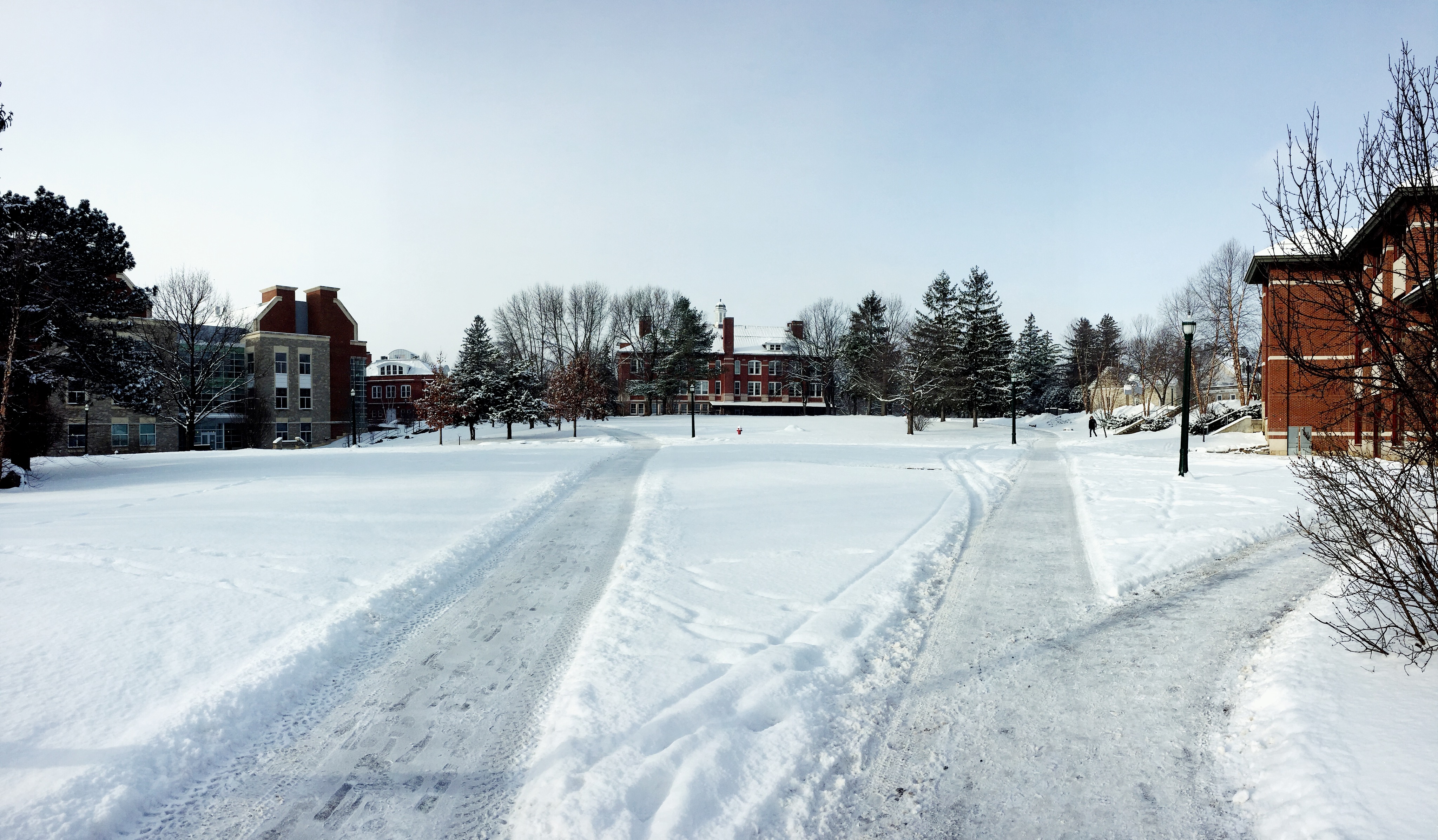Canton’s harsh winters force the St. Lawrence facilities and grounds teams to work around the clock to keep the campus open and students safe. One of the key ingredients to de-icing is salt, which has detrimental environmental impacts but is irreplaceable due to its effectiveness and price point.
Chief of Facilities Dan Seaman explained that SLU facilities and grounds teams work tirelessly during winter snow storms to keep campus up and running. “Typically we estimate for every 4 inches of snow it takes us 6 labor hours to open up campus and another 2 labor hours to clean up, push banks back, get areas we may have missed,” stated Seaman. The process of cleaning up begins as early as 3 a.m. on weekdays. The team will also begin earlier if there is a strong storm to ensure campus remains safe and open.
SLU uses a wide range of machines, such as sidewalk plows, large plows and other heavy machinery for the roads. The biggest concern is ice building up around dorms, sidewalks and campus buildings. “We use only rock salt either solo or mixed with sand. Our sand and salt mixture is 30 percent salt and 70 percent coarse sand. This is for roads, parking lots and walks only,” Seaman mentions. He said the reason for using salt is fairly simple. “It’s mainly economics and proven product consistency and effectiveness.”
Salt and sand has kept winters ice-free, as SLU has not had a snow day in over 40 years. However, other methods of deicing are being researched, such as the use of beet juice. Tyler Senecharles ’20 explained some of the effects of salt. “It works in the same way salt would work. However, it is not widespread and it also is not cheap,” explained Senecharles. She has recently written a paper on the topic and investigated the environmental effects of using salt on roads, parts of the SLU campus and spent part of her time researching the beet juice method.
“Beet juice would be a more environmentally friendly alternative because salt runs into the water, creating artificially salted water,” she adds. Salt has lasting effects that impact wildlife, freshwater and lead to soil degradation.
Although these methods are in theory environmentally friendly, they are still not as cost effective as salt is for a school like SLU. “We are constantly looking at alternatives, but we have to keep in mind that due to our location and budgetary constraints we may not be able to buy in bulk enough to justify a change,” explained Seaman. “I think in the future SLU will use alternatives as a mix into our salt and sand, as we apply, but no plans of totally switching over.” For the school to completely switch over would mean a need for more facilities to hold the liquids, which would mean more spending. It also would track more inside the buildings possibly making it harder on janitorial crews.
The SLU facilities team will continue their hard work using what is most effective in their position, the number one priority is taking care of students. “We have excellent, dedicated staff who are committed to the safety of the community and they work hard to ensure campus is open and as safe as they can make it,” Seaman stated.



